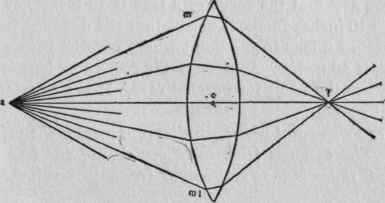Photographic Lenses - Their Nature And Use. Part 8
Description
This section is from the book "Complete Self-Instructing Library Of Practical Photography", by J. B. Schriever. Also available from Amazon: Complete Self-Instructing Library Of Practical Photography.
Photographic Lenses - Their Nature And Use. Part 8
604. Evenness Of Illumination
Evenness Of Illumination. Unevenness of illumination is an inherent fault in the old lenses. Outside of a more or less limited area in the center of the field, the illumination rapidly diminishes towards the margin, causing a vignetted effect. A smaller aperture reduces this effect, but as it also reduces the speed, the evenness of illumination with a large relative aperture is a desideratum. A large area of critical sharpness, great flatness of field and evenness of illumination with a large relative aperture, are advantages which give the best modern lenses a vast superiority over the old ones.
605. Focus
Focus. Focus is the point in which the rays of light meet after transmission through the lens, and at which the image is formed. In Fig. 15 a certain luminous point

Fig. 15.
(a) on an object sends a number of rays in the direction of the lens. Those which fall upon the lens (as do all the rays included between m and m1) are so directed that they all pass through the same point (f). They all meet in this point, and this common meeting point for them all is their focus. We also say it is "the focus of the lens" for those rays, because it is the point to which the lens steers them.
606. If a lens were pointed toward the sun (it is not advisable to do so, however), the sun's rays would be converged to a point behind the lens - the focus for solar rays, or the solar focus, the principal focus of the lens. We also term this point the focus for parallel rays, because, coming from such a distance, all the rays would be practically parallel when entering the lens. But in commonly speaking of the focus of the lens of the rays, we do not refer to their meeting point, but to the distance between this meeting point, the principal focus, and another point, the one from which the distance is measured. This point has been variously termed the "optical center," the "center," the "nodal point" or the "node" of the lens. It is nowadays termed the "node of emission," and it is sometimes located within the lens, sometimes outside of it. In doublet lenses it is generally located sufficiently near the diaphragm to make it in most instances safe and accurate enough to measure the distance from there. For the sake of convenience, and to avoid going into explanations which might prove confusing, we shall here use the term "center." Thus when we say that the focus of a lens is 10 inches, or that a lens has 10 inches focus, it means that the distance from the "center" of a lens to the point where parallel rays come to a focus, is 10 inches. Whenever the focus of a lens is given, it is always the focus for parallel rays. It is also referred to as focal length.
607. The point where parallel rays meet is the principal focus. The distance from the "center" of the lens to the principal focus is the focal length (commonly referred to as the focus).
Continue to:


